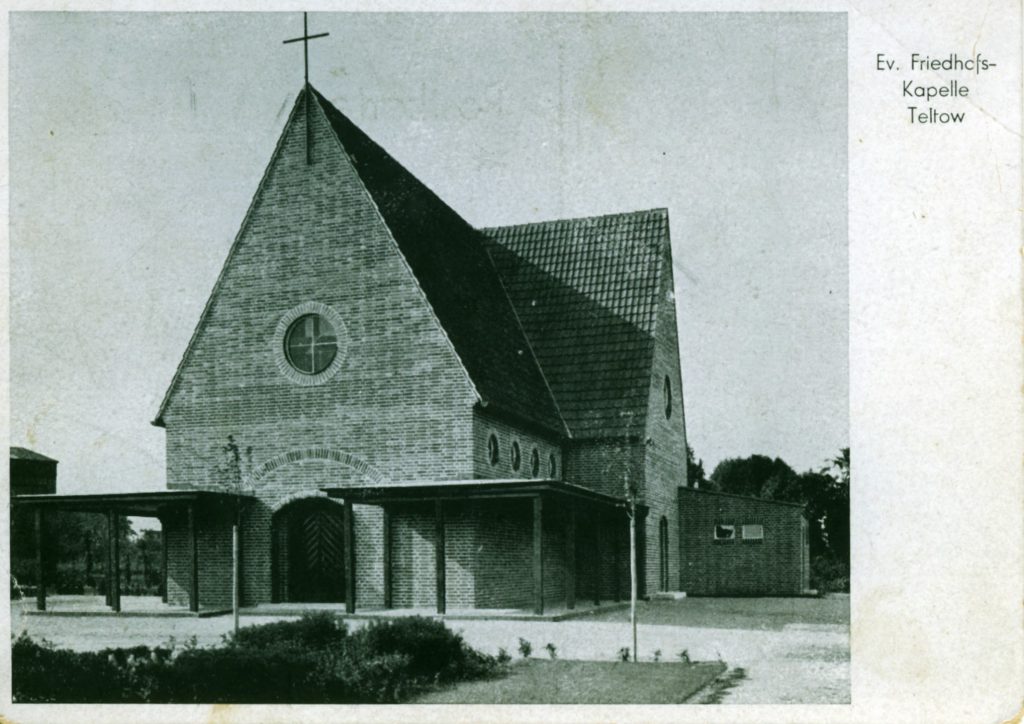[overview] [last station] [next station]
The unadorned cemetery chapel combines characteristics of traditionalism and modernity, as is characteristic of large stretches of architecture from the first half of the 20th century: built on an elevated site, with a sacral spatial effect and architectural ambition. This effect and the original expanse around the building are somewhat lost today, being surrounded by trees and bushes.
The red clinker brick building is a rectangular, north-south oriented hall building, extended into a cross-shape by cross wings, covered by a steep saddleback roof decked with pantiles. The open ambulatory, formative for the outer appearance of the chapel building, with flat desk roofs borne by wooden posts, surrounds the chapel hall in the east, south and west, and opens only in front of the flat arched main portal.
A simple metal cross at the south gable indicates the Christian character of the building. From the very beginning, the simple mourning hall should also be a place of Christian annunciation. The architect Winfried Wendland (1903 – 1968) wanted to reflect not only the gravity of death, but rather the spirit of victory of the Resurrection.
Anyone entering the interior of the chapel room will be amazed by the unexpectedly generous effect. Larger and smaller round windows as well as grouped, small rectangular windows brighten up the building parts. The floor is covered with Solnhofen slabs. The 12 m high roof structure with struts, tongs, ridge and middle purlins is visibly supported on brick wall-brackets.
On the raised altar area there is a tuff altar. A large mosaic cross, surrounded by a word of Jesus, dominates the north wall behind the altar. A wooden staircase leads to a wooden gallery. Dark wood contrasts with light, rough plaster. Church benches replace the former, no longer preserved individual seating.
Even more layers of recent German history are revealed opposite the main portal of the chapel. A monument was erected here after the Second World War to commemorate the storm on Berlin and to honour the soldiers of the Red Army who fell in the process.

